I’m thrilled to welcome Ashley Herring Blake to the blog today. Ashley’s middle grade novel The Mighty Heart of Sunny St. James just released this week, and she stopped by the Mixed-Up Files to tell us about it and to offer an autographed copy. (See details on the giveaway at the end of the interview.)
First, here’s a little bit about Ashley and the novel:
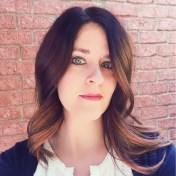 Ashley Herring Blake lives in Nashville, Tennessee with her husband and two sons. She is the author of the middle-grade novel and ALA Stonewall Honor book Ivy Aberdeen’s Letter to the World as well as the young adult novels Suffer Love, How to Make a Wish, and Girl Made of Stars. Her newest middle-grade novel is The Mighty Heart of Sunny St. James. You can find more about her on her website and on twitter and instagram.
Ashley Herring Blake lives in Nashville, Tennessee with her husband and two sons. She is the author of the middle-grade novel and ALA Stonewall Honor book Ivy Aberdeen’s Letter to the World as well as the young adult novels Suffer Love, How to Make a Wish, and Girl Made of Stars. Her newest middle-grade novel is The Mighty Heart of Sunny St. James. You can find more about her on her website and on twitter and instagram.
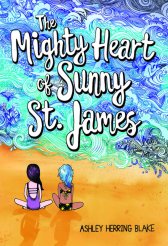
Twelve-year-old Sunny St. James navigates heart surgery, reconnecting with her lost mother, first kisses, and emerging feelings for another girl in this stunning, heartfelt novel–perfect for fans of Ali Benjamin and Erin Entrada Kelly. When Sunny St. James receives a new heart, she decides to set off on a “New Life Plan”: 1) do awesome amazing things she could never do before; 2) find a new best friend; and 3) kiss a boy for the first time. Her “New Life Plan” seems to be racing forward, but when she meets her new best friend Quinn, Sunny questions whether she really wants to kiss a boy at all. With the reemergence of her mother, Sunny begins a journey to becoming the new Sunny St. James. This sweet, tender novel dares readers to find the might in their own hearts.
What was the inspiration behind the story of The Mighty Heart of Sunny St. James?
Sunny started out with a few things: A motherless girl, mermaids, and the ocean. I knew I wanted to write about a girl whose mother had left her at a very young age because of alcoholism and I wanted that mother to show up again. I wanted to explore what happens when someone who’s hurt you truly does rehabilitate—what does forgiveness look like, does that relationship have a future. I also wanted to write about a different kind of family, one that is both biological and found. The heart transplant part of the story came a bit later, as I was figuring out exactly what kind of girl Sunny is. The concept, honestly, took me a bit by surprise, but once I started thinking about it, I was intrigued to explore the challenges Sunny would encounter.
When the novel opens, Sunny is just about to have a heart transplant. I love the thought she has later about trying to make her new heart fit into her head like it fits into her body. Also, the part about her suddenly liking butterscotch pudding. It made me wonder how much research you had to do to come up with these insights into the mind of a heart transplant recipient.
Most of the research I did about heart transplants was medical. Surgery time, recovery, medication they have to take afterward, what kind of physical activity they can do and how soon after the surgery they can do it. I did pull on some knowledge I had before starting the book, about how amputees feel phantom pain and things like that. I read some blogs by transplantees that gave me some valuable insight into the emotional aspects of having a transplant. I also did a lot of thinking about Sunny, a lot of visualization. I imagined how strange it might feel to have your most important body part taken away and replaced with someone else’s, someone who had to die in order for you to have that body part. Writing, for me, is a careful balance between accurate research and empathy. In order to develop a character the way I want, the kind of character I want to read, I have to put myself in that character’s shoes as much as possible.
This novel and your previous middle grade novel, Ivy Aberdeen’s Letter to the World, both deal with girls who have crushes on other girls. Why do you feel it’s important that there be more books like this for middle grade readers?
Simply put, these books are important because there are kids who need them. Millions of kids are questioning their identity, are already sure of their queer identity, or are just curious about thoughts and feelings they’re having that they’re just not quite sure what to do with. We’ve all heard stories about people who didn’t come out until their twenties, thirties, but who always had these feelings about their sexual identity that they didn’t feel safe divulging, didn’t have the vocabulary to talk about it, or some combination of the two. Stories like Ivy and Sunny give kids a safe place to wonder. They give them a sense that they are not alone. They help them see they are worthy of time, of attention, of a conversation, of love. We need more books like these because kids need more books like these.
Sunny’s mother, an alcoholic who left Sunny with a friend several years before the novel opens, suddenly shows up in her life after the heart transplant. Was it difficult writing a character who abandoned her child?
It was actually. I’m a mother myself and I had to really reach to find reasons why I would ever leave my kids. Lena, Sunny’s mother, truly believed it was the best thing for Sunny and indeed, it might’ve been, but it’s still hard to justify a mother leaving her child and for eight years. Lena was an interesting character to write, which is why I wanted to write about this situation. There’s not an easy solution for Sunny and Lena and I wanted to show that, that life is messy, motherhood and childhood is messy, forgiveness is messy. Kate, Sunny’s guardian, made it a little easier to write. Through writing Lena’s story, I knew all the while that Sunny was deeply loved and cared for, so that was a little bit of comfort. Not every child has that, however, and we can’t forget those kids either.
You write both middle grade novels and young adult novels, can you talk a bit about the difference between the two?
It’s been interesting writing both these past couple of years. I don’t shy away from difficult topics in middle grade. In fact, I could easily see the same issue and topics from Ivy and Sunny in a young adult novel. I think the difference is simply the language I use to express these topics and situations and the lens through which I’m viewing them. A twelve year old’s understanding of an alcoholic mother is much different than a seventeen year old’s, which I wrote about in my young adult novel How to Make a Wish. I have to think about things like vocabulary, maturity, and emotional/physical/psychological development. Another difference is how I approach sexuality. In YA, I explored sex a lot more. In MG, it’s more about sexuality as identity rather than the actual act of making out and having sex. In writing YA or MG, it’s all about my target audience and that’s who I have to think about while writing.
One of the things I loved about the novel is how well your words get the reader to feel the emotions of the characters. Do you have any tips for writers on how to do this?
That is a great question and I wish I had a quick and easy tip. I have many flaws as a writer, but I do think I do emotions pretty well and the only thing I can think that contributes to that semi-competent execution is really knowing your character. Ruminate on them. Picture yourself in their shoes. Think about how you would feel it that were you. Know their needs, wants, and end goal before you start writing. Those may change, for sure, but one thing that drove Sunny throughout the book was her desire for a best friend, to kiss someone, and to do amazing things she never got to do when she was sick. Knowing she wanted those three simple things helped me understand how she would react in certain situations. I also needed to know her backstory. I like to think about backstory as the ghost. What is haunting that character? What do they carry on their back? So it’s not everything they’ve ever seen and done. It’s what haunts them. And for Sunny that was her mother leaving her when she was four, which as I dug deeper into that, meant she questioned whether or not she was lovable and worth the trouble. This was further developed with her issues with her former best friend. So you can see how knowing, solidly, just a few things about my character opened up a large emotional landscape for the novel.
Thanks so much, Ashley, for these great answers and for taking the time out to visit the blog.
To be the lucky winner of a copy of The Mighty Heart of Sunny St. James, leave a comment below. I’ll choose a winner at random on Sunday at midnight and announce it on Monday. (U.S. only please.)
Like this:
Like Loading...
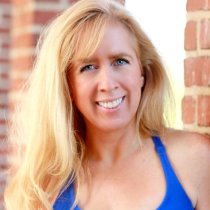 But first, here’s a little bit about Jan and PROJECT ME 2.0.
But first, here’s a little bit about Jan and PROJECT ME 2.0.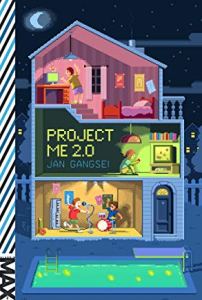 An eleven-year-old boy on a quest to impress his suddenly cute, longtime friend accidentally manifests a tiny internet guru into existence in this hilarious MAX novel!
An eleven-year-old boy on a quest to impress his suddenly cute, longtime friend accidentally manifests a tiny internet guru into existence in this hilarious MAX novel!
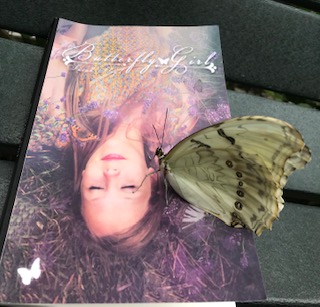
 Ashley Herring Blake lives in Nashville, Tennessee with her husband and two sons. She is the author of the middle-grade novel and ALA Stonewall Honor book Ivy Aberdeen’s Letter to the World as well as the young adult novels Suffer Love, How to Make a Wish, and Girl Made of Stars. Her newest middle-grade novel is The Mighty Heart of Sunny St. James. You can find more about her on her
Ashley Herring Blake lives in Nashville, Tennessee with her husband and two sons. She is the author of the middle-grade novel and ALA Stonewall Honor book Ivy Aberdeen’s Letter to the World as well as the young adult novels Suffer Love, How to Make a Wish, and Girl Made of Stars. Her newest middle-grade novel is The Mighty Heart of Sunny St. James. You can find more about her on her 